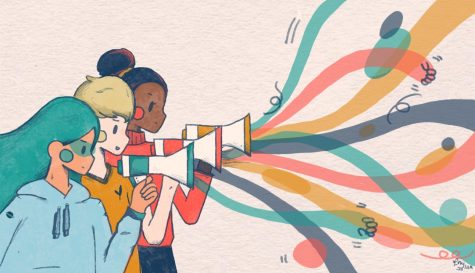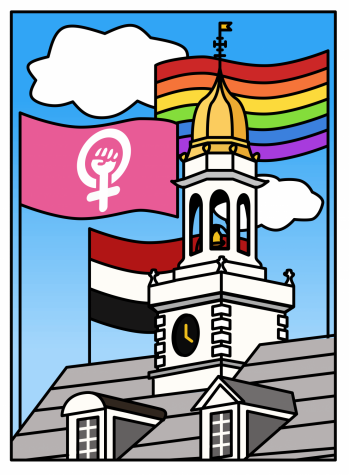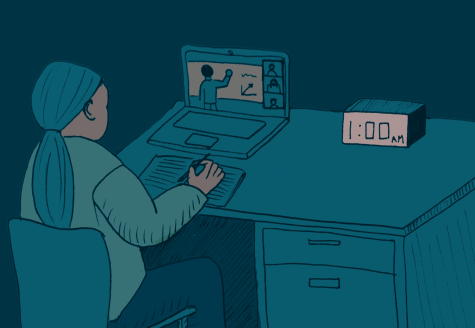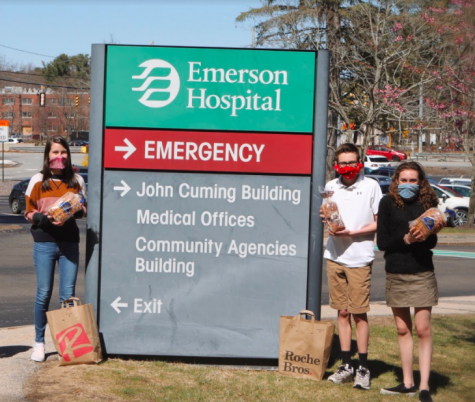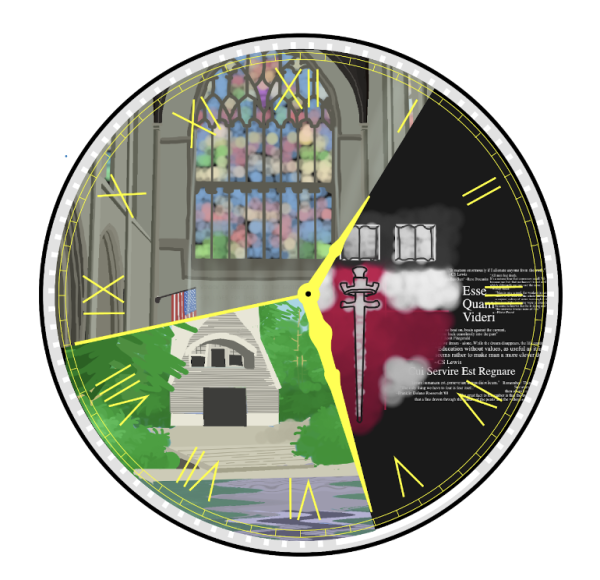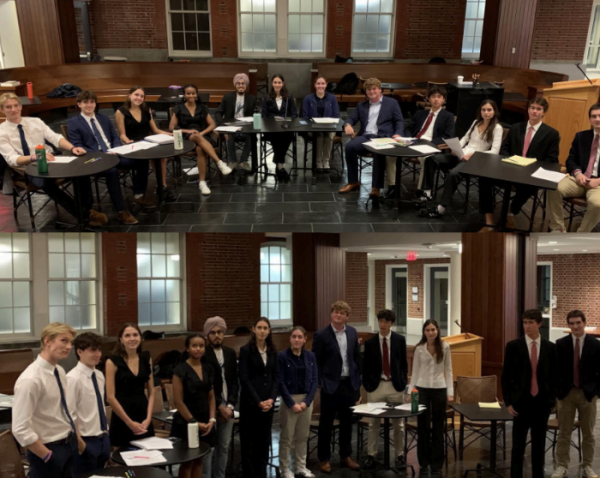Engineering Class Looks at Chapel Lines
Last month, the engineering class was assigned to identify an issue around campus that could be ameliorated using the skills they had been learning in class. One design team, comprised of Freddie Tobeason ’19, Jaden Cheeks ’19, Andrew Lei ’19, and Kevin Carney ’20, focused on fixing the large groups that coalesce in front of the chapel just before 8 a.m. They believed that taking attendance by checking off individual names on a roster was often time-consuming and sought a quicker method by which students could enter the chapel.
The team brainstormed various ideas before settling on one that utilized students’ keycards to take attendance. In their prospective system, people would merely tap their cards on a scanner before they entered. The team hoped that the process would conserve enough time to shorten the lines before chapel.
Electing to further develop their plan, the four students devised a prototype that would enable them to observe the efficiency of this method. As engineering teacher Bert Hall explained, “the test run was a prototype in which [the students] used 3-D printing and soldered simple LED circuits” to create fake scanners to judge how long it would take students to enter Chapel. After receiving approval from the Deans and Reverend Whiteman, their experiment came to fruition on October 26th.
That morning, students followed instructions in an all-school email sent from the design team that asked them to swipe their keycards over scanners in front of the Chapel. The process allowed the team to observe their idea’s functionality, but because most students were unaware that the prototypes were not real scanners, the test run created a placebo effect that let the team gauge student’s reactions to the system.
Some students felt frustrated to learn of the misleading implication that the prototypes were scanning their keycards, while others believed that the exercise did not ultimately fulfill its purpose. One student, who asked to remain anonymous, said the test run would have been more accurate had the team “timed it and compared their result to the time [taken for students to enter chapel] on a normal day.”
The team nevertheless concluded that the test run had indeed reduced the lines at chapel. Ease, however, was not the system’s only compelling factor for the engineering class. Occasionally, students walk through the chapel doors, listen to the speaker, sing along during the hymn, and later return to their laptops only to find a notification of their absence that morning. This may be attributed to the masses before the chokepoint of the front doors, which gradually accumulate in the time it takes chapel prefects to find each person’s name on a list and mark them present. As Chapel Prefect Ayanda Tambo ’19 admitted, “I’m not the greatest at spotting everyone, so [the keycard system] would be easier for me.” Fortunately for students two demerits away from receiving a work crew session, technology is less prone to human error. Math teacher Nat White agreed that the team’s idea seemed to be “fast, easy, and accurate” and expressed his hope that it be explored further.
As with every initial concept, the class’s proposal is not entirely without flaws. If someone wished to skip chapel one morning, it would be relatively simple for a friend to scan in the keycard of the absent student. The most pressing concern for students may be the possibility of forgetting key cards in dorms or at home. Design team member Freddie Tobeason ’19 explained that in this situation, students “would follow the typical protocol of going to the deans and saying that they were present.”
In the hopes of fully installing the key card system, or some similar arrangement, at Groton, the design team will be meeting with members from the IT office to determine their concept’s feasibility and logistics. In the meantime, the team is testing other ideas such as asking Second and Sixth Formers to enter by the back chapel door rather than the main double doors. This seemed to have been effective, as the lines by the main doors were drastically shorter than on other days, and students found it more convenient as well because forms entered nearer to their assigned sections. Some students questioned how this would affect special chapel circumstances such as handing out alternative hymns, which usually happens at the main door.
Other design teams from the engineering class have begun their projects as well, including creating a path through the Circle from the Chapel to the Schoolhouse and replacing the wide tables on the first floor of the dining hall with thinner ones. Both projects aim to make simple acts such as arriving to roll call on time or putting backpacks down before meals easier. Alison Brown ’19 thinks, however, that these minor projects “solve ‘problems’ that are non-issues. Why don’t they tackle problems that could have a meaningful impact?” She cited environmental injustice as a possible point of focus, suggesting the engineering of cleaner combustion methods, more efficient solar panels, and ways to lower the toxicity of landfills.
Students continue to utilize each of the engineering class’s ideas, and the design teams remain persistent in their search for practices that conserve time or allow for more ease in Grotonians’ lives. In the long term, however, only time will tell which, if any, of the engineering class’s proposals are implemented permanently as effective solutions to issues around the Circle.



